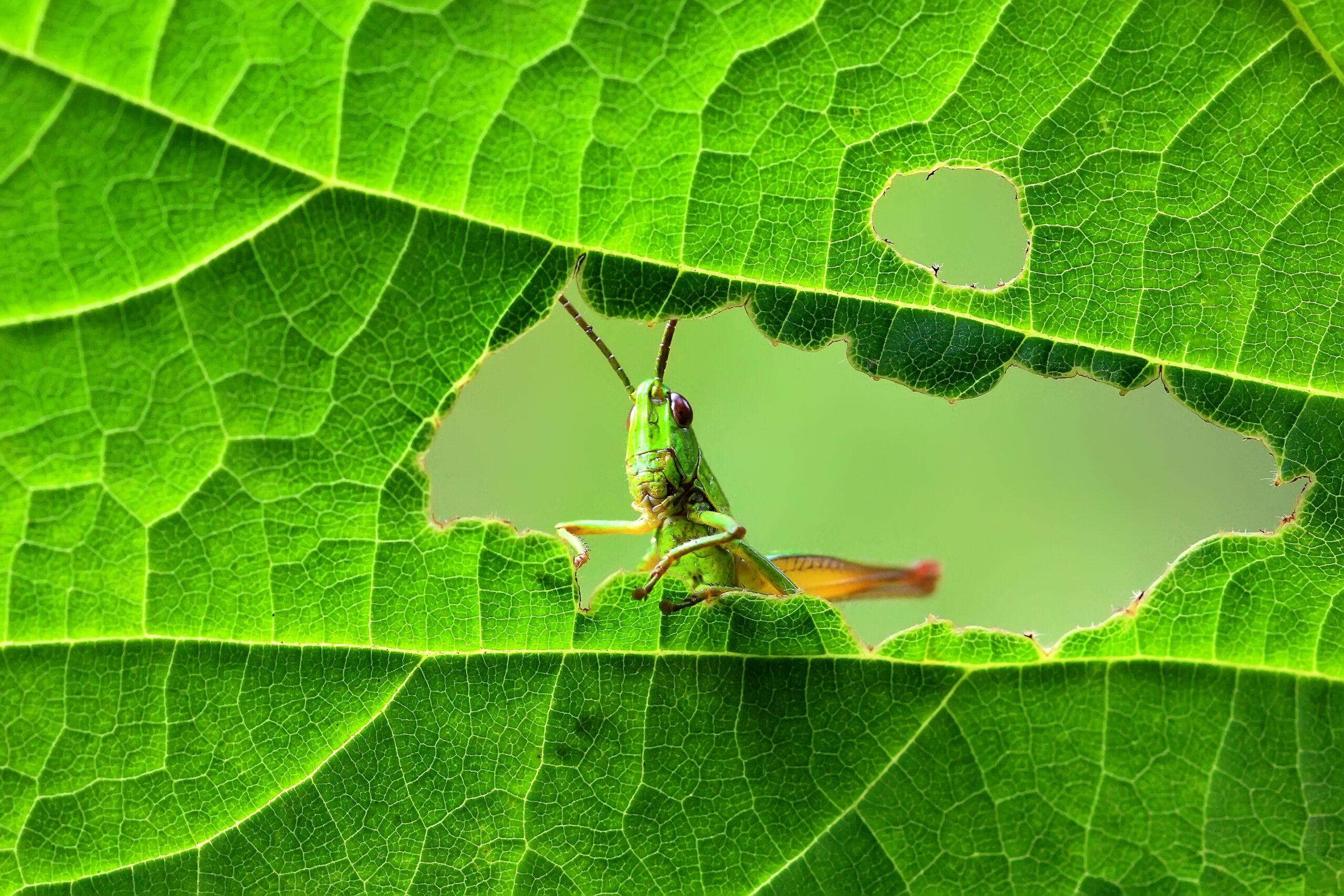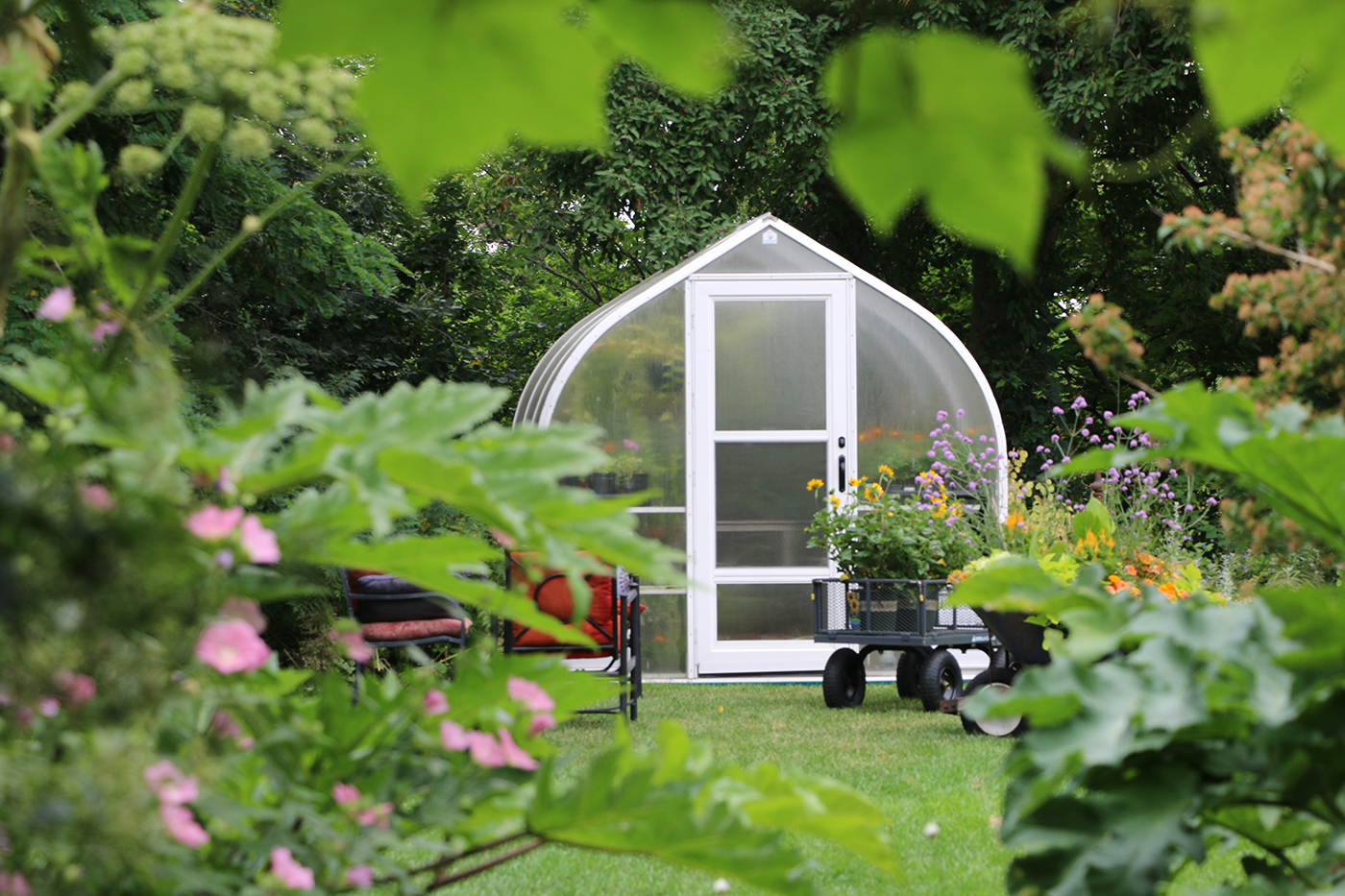We’re all seeing it: Many of our flowers and veggies took a “time out” and slowed their growth during our rainy, cool weather in June. So did many of the pests that target them. But these plants and their insect followers are now making up for lost time.
That’s my cue to touch base with our helpful Garden Advisors to see what problems they’re hearing from our guests – and what gardeners can do about them! With Tagawa’s emphasis on products that are least harmful to pollinators and other beneficial insects in the garden, I’ll generally be offering the least toxic options first.
I’ll begin with an unwelcome pest I’ve been noticing lately, and from what our Garden Advisors say, a lot of other gardeners are finding this one, too.
Grasshoppers
Even the experts at CSU will tell you that grasshoppers are one of the hardest insects to control. Why? Because they’re so mobile! They jump. Some of them fly. They go pretty much wherever they want to go!
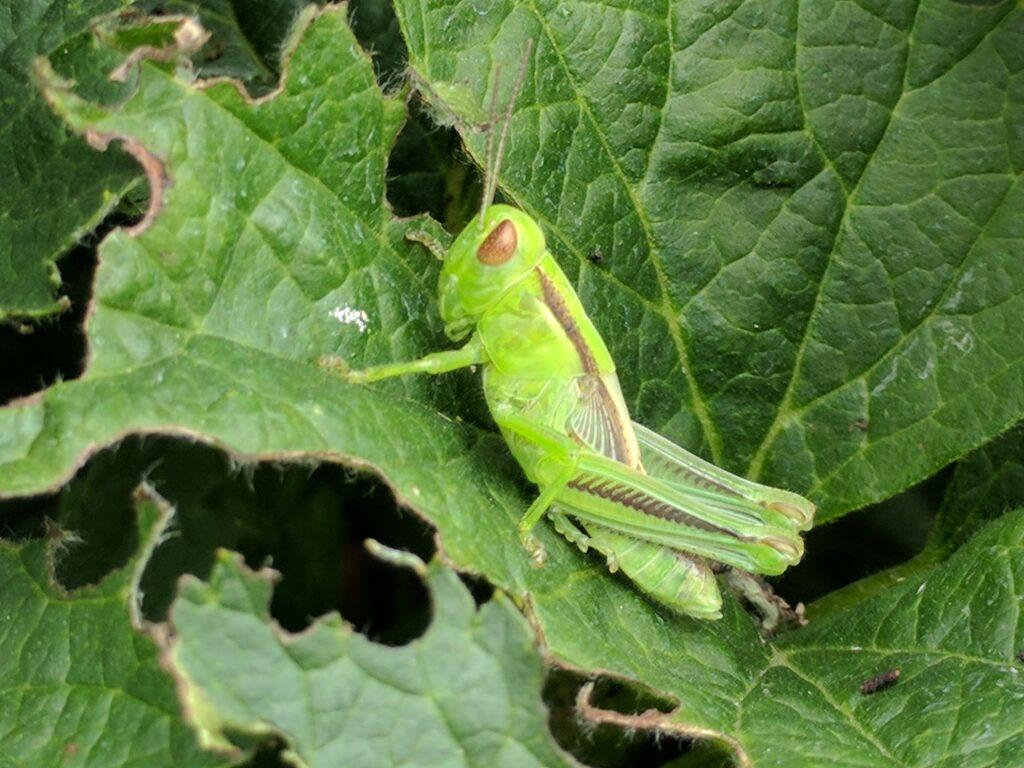
Just look at those legs! An article in the journal Scientific American says grasshoppers’ ability to leap is comparable to a person jumping a five-story building or traveling the length of a football field in just three hops! Now that’s mobile!
Linda, my very good buddy at the Garden Advisor’s Desk, recommends insecticidal soap as her go-to organic pesticide method for grasshoppers.
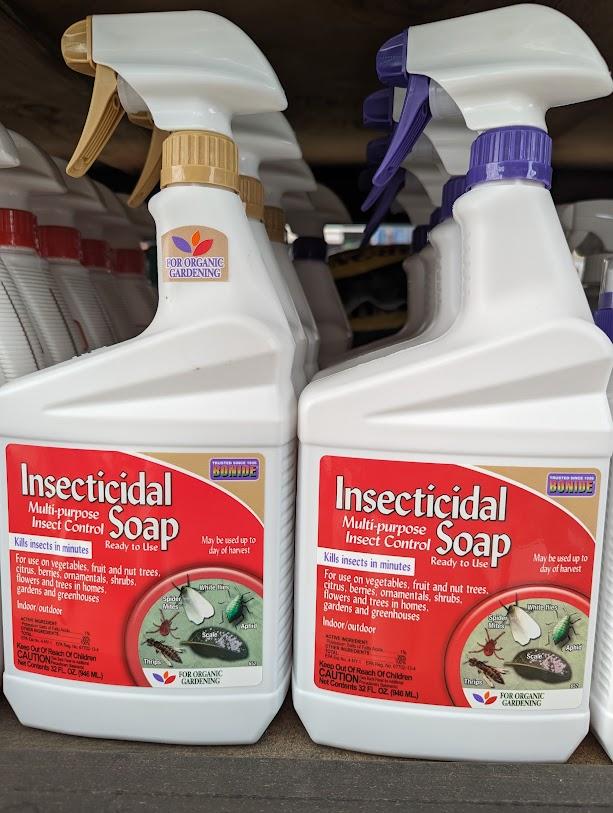
Insecticidal soap works as a contact spray. The solution needs to hit the insect directly for it to work. Once the liquid has dried on nearby foliage, it has no residual effect. Insecticidal soap works mainly by softening an insect’s shell, also known as its exoskeleton. Once that’s compromised, the target pest dies fairly quickly.
One challenge with this approach is that insecticidal soap works best when the grasshoppers are small. Being observant early in the gardening season is ideal, as large adult grasshoppers may be able to withstand the spray.
A more broad spectrum, non-organic option for controlling grasshoppers is the pesticide Eight. Please keep in mind that Eight, like all pesticides including organic options, needs to be used exactly according to label directions.
Scale
Scale is one of those pests that can easily be overlooked until the damaging effects of the insect’s feeding begin to show up.
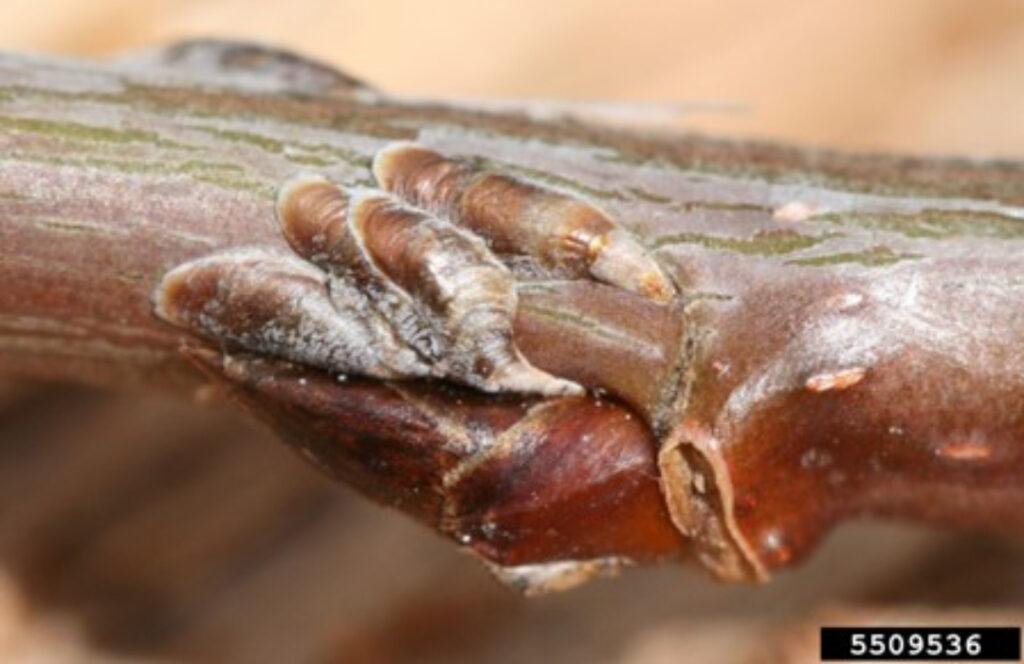
Photo: Whitney Cranshaw, CSU
Individual scales are so tiny, they’re hard to spot until a tree or other plant they’ve hit begins to show signs of stress. The various types of scale can also look quite different from each other, adding to the confusion. The scale insects themselves are extremely small. They protect themselves by creating little enclosures to fend off predators, then using their piercing/sucking mouth parts to feed on plants they’ve targeted.
The Garden Advisors at Dick’s Corner are hearing from guests who are finding scale on their aspen trees once they realize the tiny bumps they’re seeing aren’t actually part of the bark. Scale infestations can occur on trunks, branches, stems, twigs, and leaves of many different types of plants.
Fortunately, horticultural oil makes for a fairly easy and earth-friendly way of controlling scale.
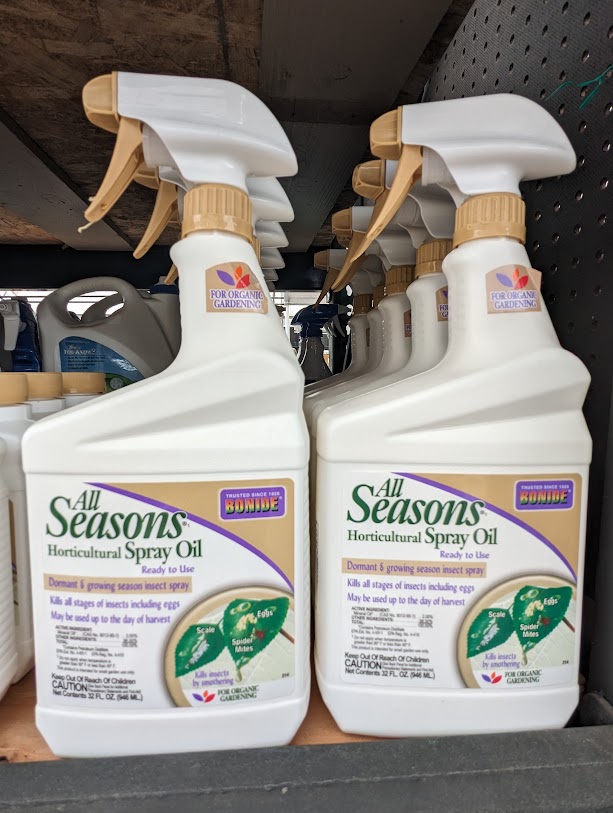
Apply the oil exactly according to the directions on the bottle, and you’ll be smothering the insects inside their protective enclosures. The oil doesn’t harm other insects, including pollinators, unless they’re directly in the line of fire when the oil is applied. The folks at Dick’s Corner will be happy to explain the details of how and when to best fight back against scale with a horticultural oil application.
Elm Leaf Beetles
Both my friend Linda and her fellow Garden Advisor Ron (a very funny guy, by the way…) have been hearing complaints about heavily damaged leaves on elm trees. The culprit? Elm leaf beetles.
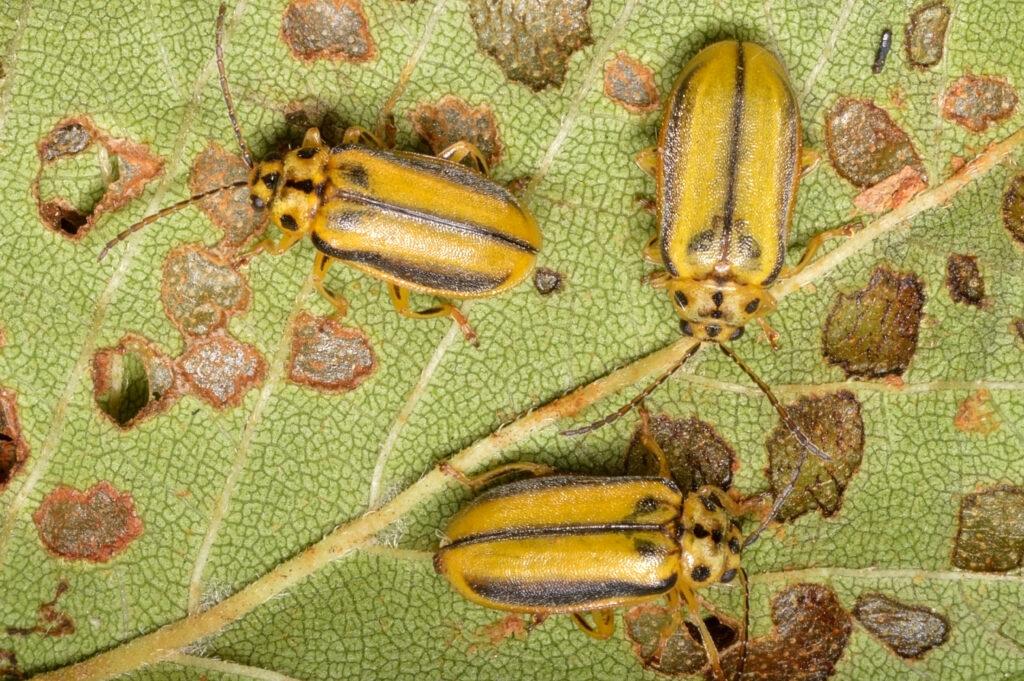
Elm leaf beetles and their larva damage elm leaves in different ways. The adults emerge in late spring and chew irregularly-shaped holes in the leaves while the larva gnaw between the veins, creating a lacy or “skeletonized” appearance.
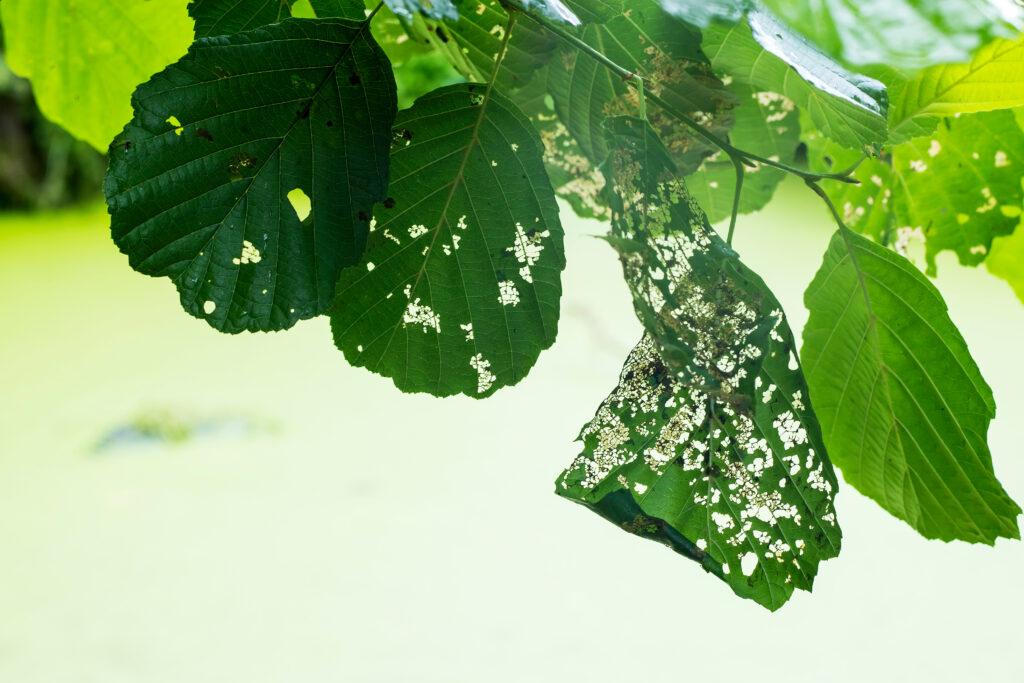
Ron says he’d advise against applying any treatment this late in the season, as the damage is done. But come next spring, there are a few pesticide options to consider. One is spinosad, an organic naturally-occurring bacteria that is toxic to a wide range of insects but largely not a problem for beneficials like honey bees when used as directed. Tagawa carries spinosad as Captain Jack’s Dead Bug Brew.
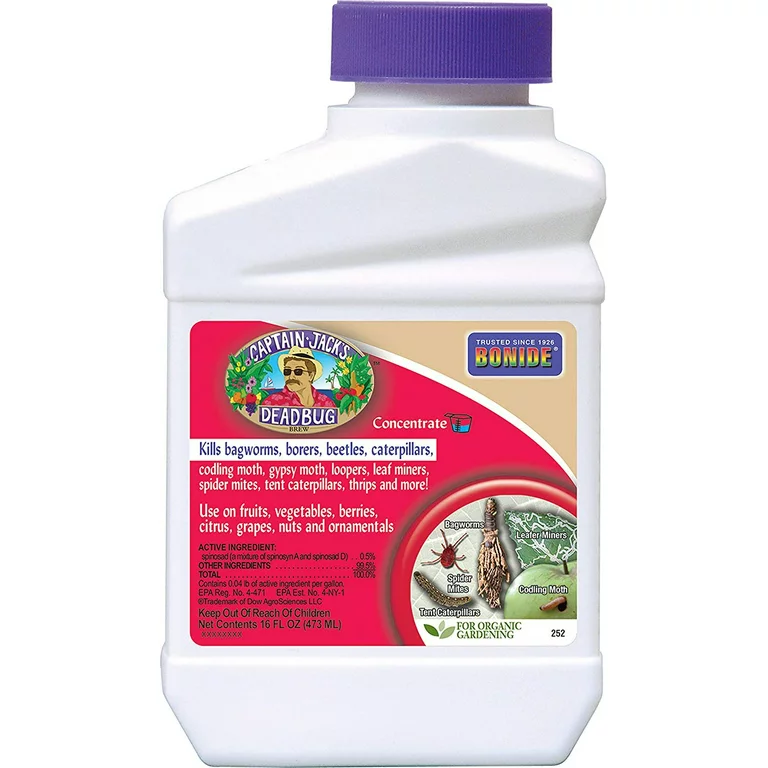
Another way to fight elf leaf beetles is a systemic pesticide applied as a granular or liquid drench over the roots of elm trees in the spring. The toxin travels up into the tree and kills the elm beetle larva that feed on the foliage.
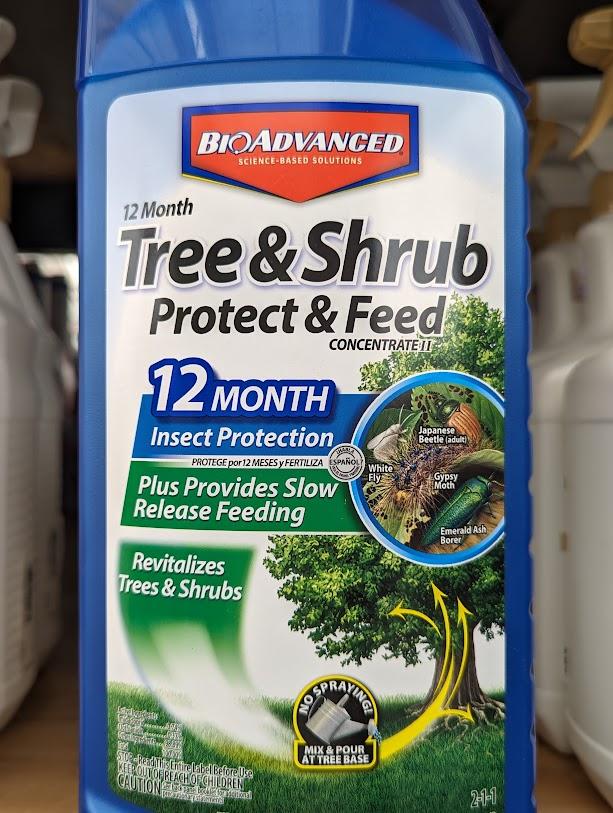
Systemic pesticides can be harmful to bees and other beneficial insects. Following the manufacturer’s directions is essential. For more detailed guidelines on using this or other pesticides, our staff at Dick’s Corner is a great resource.
Japanese beetles
There has been a lot written about Japanese beetles along the Front Range, and Tagawa has been outspoken on what has become the most unwelcome of garden pests, offering classes and free handouts to help gardeners deal with this ravenous pest. These beautiful (in their way) but often heartbreaking marauders are now easily recognized by most home gardeners whose plants have come under attack.
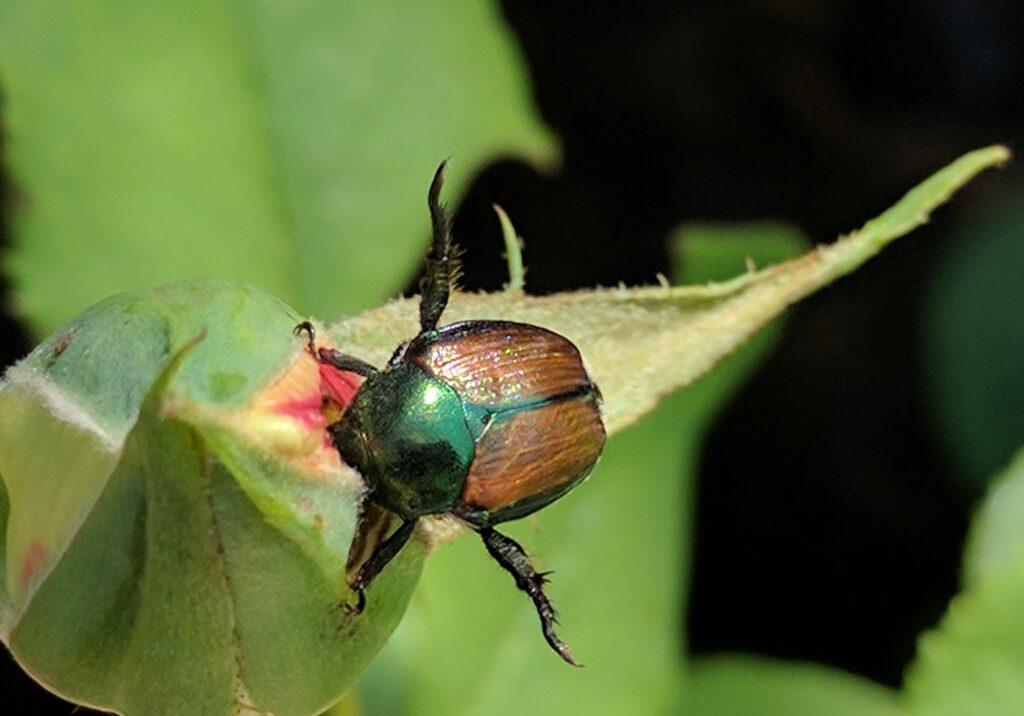
The sad fact is that these beetles are almost certainly here to stay, but that doesn’t mean we have to surrender our gardens to them! Mechanical control, i.e. flicking the beetles into a bucket of soapy water, is still one of the most effective techniques to help keep the beetles in check. The soapy water approach is best done in the early morning or late evening, when the beetles are more sluggish.
An up-and-coming organic approach to the adults beetles is a product called beetleGONE! The granule product grubGONE! is the form of the pesticide used to control the grubs in lawns where the beetles lay their eggs.
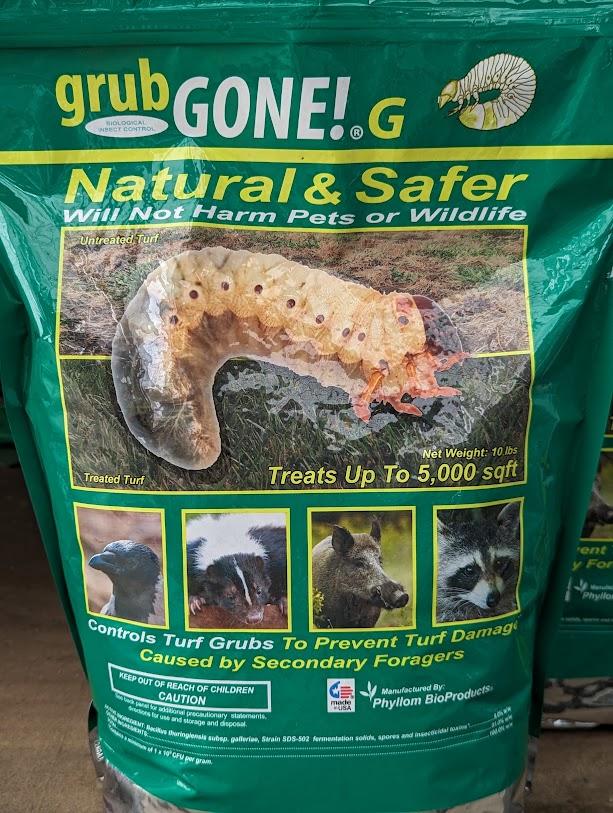
Both products are showing results, but are still best used in combination with other techniques like flicking the beetles into soapy water.
An alternative grub control is GrubEx, a non-organic granular that is effective against a variety of beetle larva, including Japanese beetles.
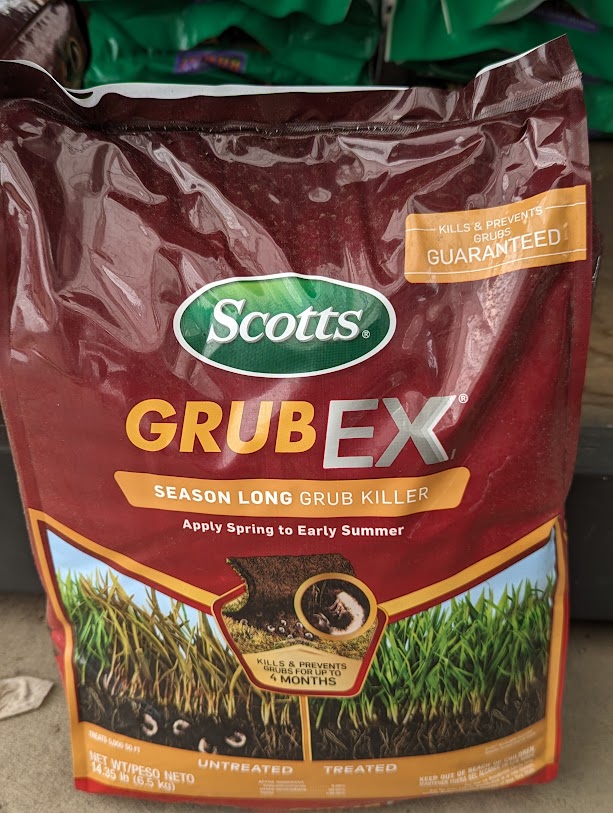
Applications of grubGONE! are time-sensitive, but now into September is ideal, and then again in the spring. GrubEx is more commonly applied in the spring.
For free Japanese beetle management handouts and lots of great advice on managing Japanese beetles, I’ll again suggest you visit Dick’s Corner at Tagawas.
Hail damage
And now for something a bit different: Hail damage that’s being blamed on insects. Linda says our repetitive hail storms back in June left behind torn and tattered leaves that perhaps weren’t obvious then but now appear to be the result of unseen insects at work.
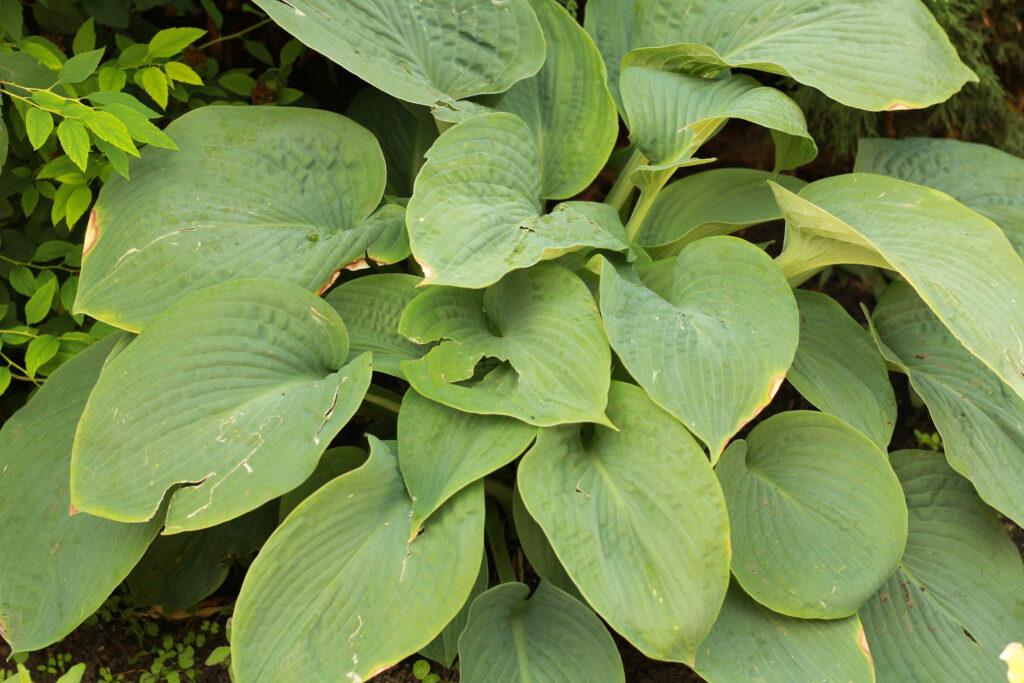
Large-leafed plants like this hosta certainly show the scars of the violent weather. The good news is that no pesticides of any kind are needed! This is a great example of a philosophy you’ll hear routinely at Tagawa…don’t reach for a pesticide unless and until you know specifically what the problem is!
And for the record…
Upwards of 90% of the insects world-wide are either beneficial or benign. Case in point: Ground beetles.
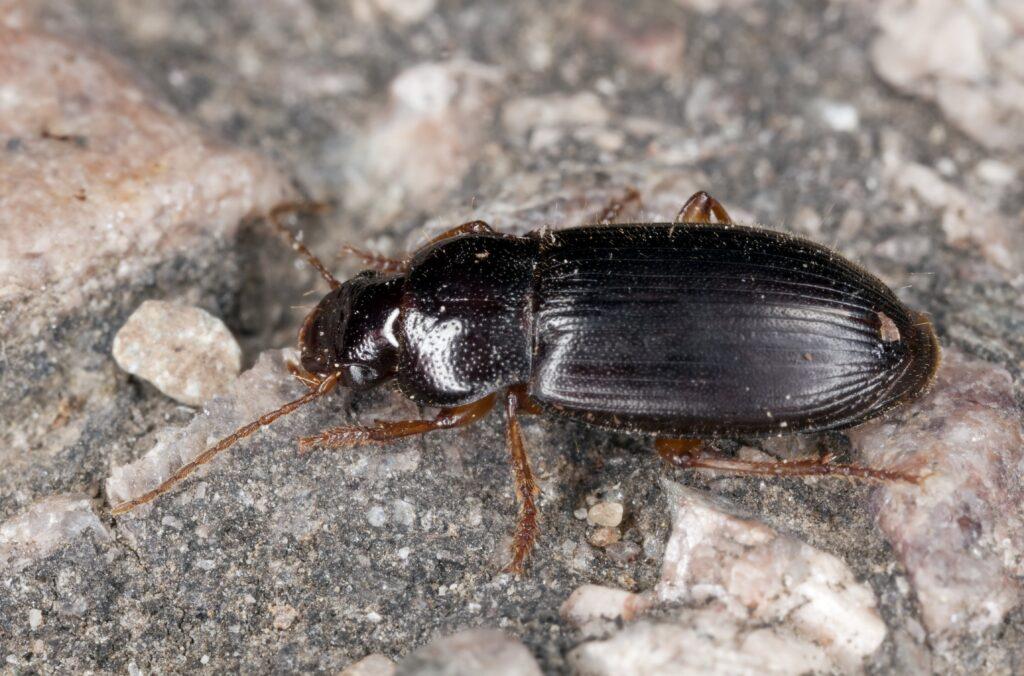
“Ground beetles” is a catchall name applied to hundreds of different types of beetles that spend their lives at or near ground level. While your first assumption might be that these guys could cause a lot of damage to your plants, most of them are actually beneficial, preventing or limiting many of the truly damaging insects.
As the adult ground beetles prey on insects above ground, their larva go after eggs and pupating stages of pests in the soil. Some of them even eat weed seeds, helping to reduce the need for herbicides.
The point is… don’t assume the insects you see in your yard and garden are the bad guys! Many of them are just doin’ their thing… no harm, no foul. Many others are actually a gardener’s friend! Stop by Tagwa Gardens today and the folks at Dick’s Corner will be happy to help you figure out who’s who!
